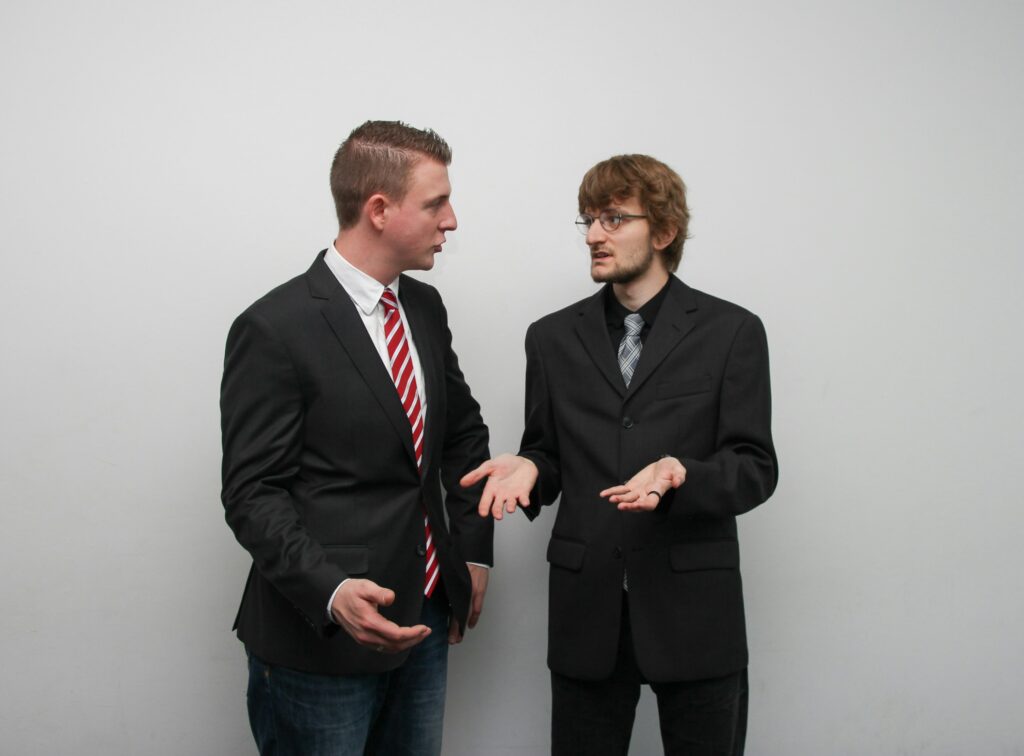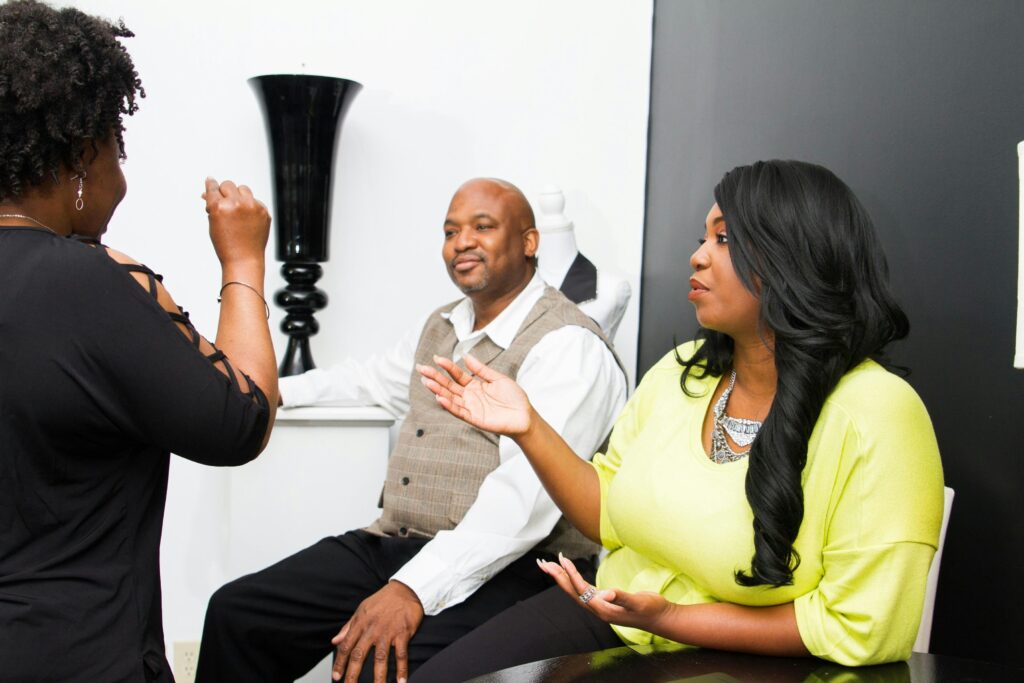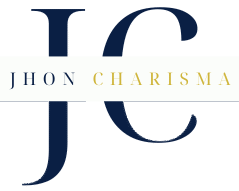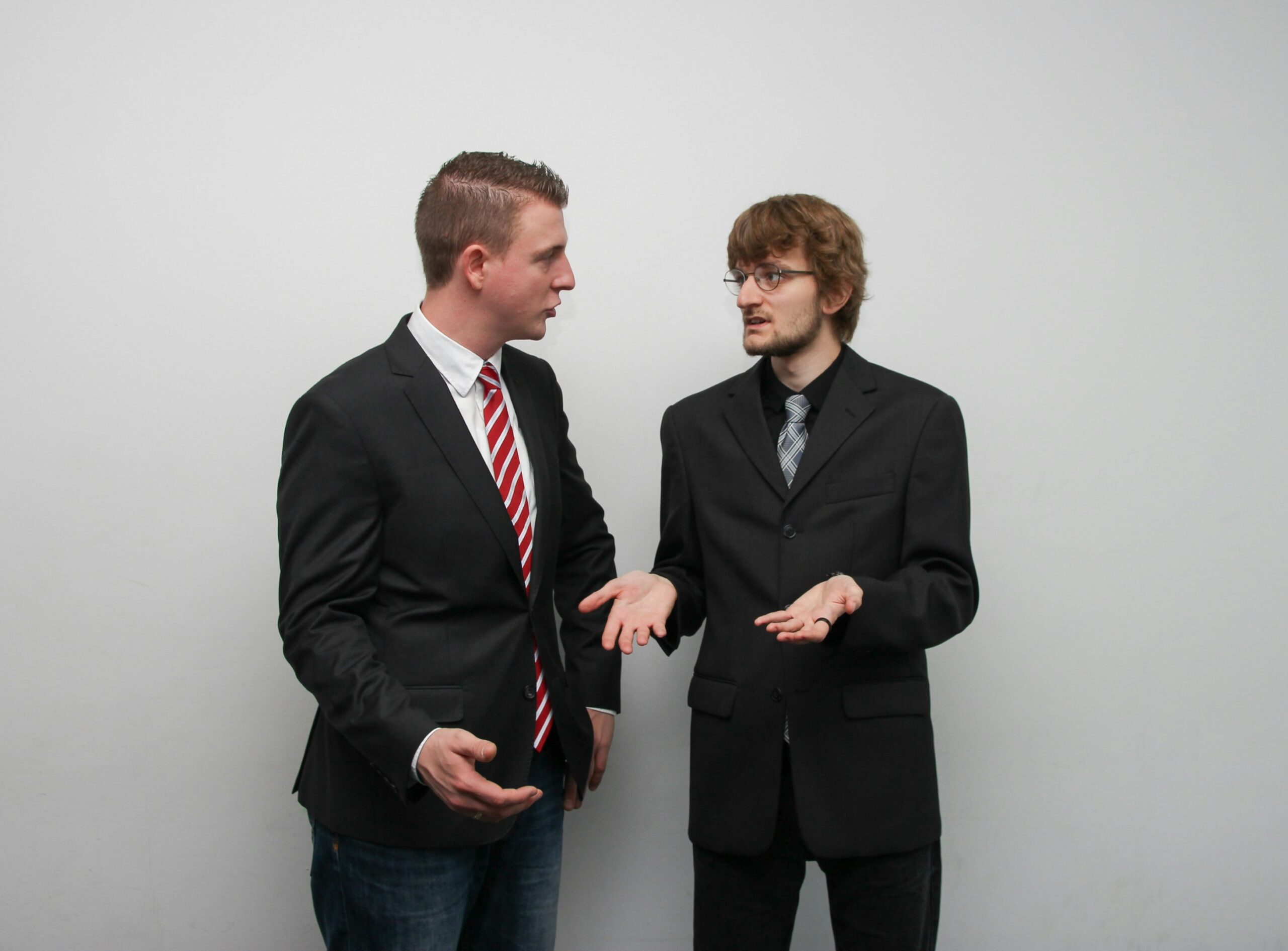Reading Body Language Like a Pro Without Being Weird: Master Subtle Observation Skills

Picture this: You’re in a meeting and can sense tension in the room before anyone speaks a word. Or you instantly know when someone’s genuinely interested in what you’re saying versus just being polite. This isn’t mind reading—it’s the power of reading body language like a pro without being weird. Non verbal communication is a universal skill that plays a vital role in today’s world, helping people connect and understand each other beyond spoken words.
According to Albert Mehrabian’s groundbreaking research, body language comprises 55% of all human communication, while tone—meaning the voice, including inflection and emphasis, which is a key part of non verbal communication—accounts for 38%, and actual words only 7%. This means that most of what people communicate happens without them saying anything at all. The challenge? Learning to read these nonverbal cues without making others uncomfortable or appearing manipulative. Understanding non verbal cues is essential for effective communication across the world, as it helps bridge cultural and personal differences.
The key to effective body language reading lies in developing subtle observation skills, understanding context, and maintaining ethical boundaries. When done correctly, these abilities can dramatically improve your communication skills, strengthen your personal and professional relationships, and help you communicate effectively in any situation.

Key Takeaways
Before diving into the techniques, here are a few tips to help you get started:
- Focus on clusters of body language signals rather than isolated gestures to avoid misinterpretation
- Establish baseline behavior for each person before making judgments about their nonverbal cues
- Use the 7-38-55 rule: 7% words, 38% tone, 55% body language for accurate communication reading
- Practice subtle observation techniques like using peripheral vision to read people and avoid staring
- Context matters – consider cultural background, environment, and situation when interpreting signals
- Master your own body language first to build genuine connections and avoid seeming manipulative

Understanding the Fundamentals of Body Language Reading
Effective body language reading starts with understanding that nonverbal communication encompasses far more than just facial expressions. It includes posture, hand gestures, eye contact patterns, spatial positioning, and countless micro-movements that reveal a person’s true emotional state. Making a conscious effort to observe and interpret these cues is essential for accurately understanding others.
Professional negotiators and FBI agents like Joe Navarro have refined these skills to detect inconsistencies between spoken words and genuine feelings. They focus on observing changes in baseline behavior rather than interpreting static positions, understanding that dynamic shifts typically carry more meaningful information about someone’s emotional state or intent. Body language can convey emotions and intentions beyond what is spoken, helping to build trust and reveal underlying messages.
The foundation of professional body language reading rests on three core principles:
Establish Individual Baselines
Every person has unique quirks and natural tendencies. Some individuals habitually fidget due to personality traits, not nervousness. Others may avoid eye contact due to cultural background or introversion, not deception. Many people don’t realize how their habitual behaviors can be misinterpreted if not considered in context. Before interpreting any nonverbal cue as meaningful, observe what constitutes normal behavior for that specific person.
Look for Clusters, Not Single Signals
For example, crossed arms alone might not mean defensiveness unless accompanied by other signals.
A single gesture rarely tells the complete story. Crossed arms might indicate defensiveness, but they could also mean the person is cold. However, when crossed arms appear alongside tense shoulders, compressed lips, and feet angled away from the group, you’re seeing a defensive barrier cluster that’s much more reliable.
Consider Context and Culture
The same gesture can have completely different meanings depending on the situation and cultural background. Maintaining eye contact shows confidence in Western cultures but can be considered disrespectful in others. The use of physical space and proximity also varies—standing close may signal comfort or intimacy in some cultures, while in others it could be seen as aggressive or inappropriate. A high-stress environment like a job interview will naturally amplify certain body language signals that might be meaningless in casual conversation.

The Art of Subtle Observation
The difference between reading body language like a pro and coming across as weird lies entirely in your observation technique. Obvious staring or pointing out others’ nonverbal behaviors will make people uncomfortable and damage trust. To help others feel at ease and avoid appearing tense or intrusive, remember to relax your own posture and demeanor while observing. Instead, master these subtle approaches:
Use Peripheral Vision Effectively
Train yourself to notice movement and positioning changes without direct staring. Peripheral vision allows you to observe group dynamics, engagement levels, and behavioral shifts while maintaining natural conversation and appropriate eye contact with speakers.
Practice the Soft Gaze Technique
Focus on the triangle between someone’s eyes and mouth rather than intense direct eye contact. The human face is especially expressive and provides valuable nonverbal cues, helping you interpret emotions and intentions. This allows you to monitor facial expressions and micro-expressions without making the other person feel scrutinized or uncomfortable.
Time Your Observations Strategically
The most natural moments for observation occur during conversation breaks, when people are listening to others speak, while someone is speaking, or during transitional moments like greetings and departures. Observing body language while someone is speaking can reveal their true engagement or emotional state. These times offer windows for noticing body language changes without appearing intrusive.
Leverage Reflective Surfaces
Windows, computer screens, and mirrors provide opportunities for discrete observation of group dynamics and individual positioning without obvious head turning or staring. This technique is particularly useful in meetings or social gatherings.

Essential Body Language Clusters to Master
Understanding specific signal clusters will dramatically improve your ability to read situations accurately. Body language clusters send powerful nonverbal messages that can reinforce or contradict spoken words, shaping how your communication is received. Here are the most reliable patterns that professionals focus on:
Engagement Signals
When someone is genuinely interested and fully engaged, you’ll typically observe:
- Leaning forward toward the speaker
- Head tilted slightly (showing active listening)
- Eyebrow raises during key points
- Open palms visible during gestures
- Relaxed, uncrossed arms and legs
Using these signals can help create a more engaging and interactive environment, making it easier to capture and maintain your audience’s attention.
These engagement signals often appear together and indicate positive receptivity to your message or presence.
Defensive Barriers
Defensive body language creates physical and psychological barriers between people:
- Crossed arms or legs
- Placing objects (bags, notebooks, drinks) between themselves and others
- Turning shoulders away from the group
- Tense shoulder positioning
- Decreased eye contact or looking away frequently
When you notice these defensive barriers, it may signal discomfort, disagreement, or the need for space.
Stress and Discomfort Indicators
Stress manifests through pacifying behaviors and tension:
- Touching the neck or face frequently
- Fidgeting with hands, pens, or jewelry
- Rapid blinking or eye rubbing
- Compressed lips or jaw tension
- Shoulder hunching or stiffness
These stress indicators often signal nervousness, disagreement, or feeling overwhelmed, even when someone’s words suggest otherwise. Nonverbal cues like these become especially important for communication when hearing is limited or unavailable.
Confidence and Authority Markers
Confident individuals display open, controlled body language, which helps create a positive impression in both professional and social settings:
- Upright, open posture without slouching
- Steady, appropriate eye contact
- Controlled, deliberate hand gestures
- The “steeple” gesture (fingertips touching in pyramid shape)
- Taking up appropriate space without aggressive expansion
Reading Facial Microexpressions
Facial expressions provide the richest source of emotional information, particularly microexpressions—fleeting expressions lasting less than half a second that reveal true feelings.
The seven universal microexpressions recognized across cultures are happiness, sadness, anger, fear, surprise, disgust, and contempt. Learning to spot these requires paying attention to specific facial muscle movements:
- Lip compression often indicates withheld information or internal disagreement
- Asymmetrical expressions (like one-sided smiles) frequently signal insincerity or mixed emotions
- Eye movement patterns can provide clues about mental processing, though these should be interpreted cautiously
- Pupil dilation may indicate interest, arousal, or cognitive load (but can also result from lighting changes)
- To identify a fake smile, observe whether the eyes crinkle and the muscles around the eyes (the orbicularis oculi) are engaged; a fake smile usually involves only the mouth, while a genuine smile lights up the eyes as well.
Decoding Posture and Positioning
A person’s physical positioning reveals significant information about their comfort level, interest, and intentions:
Open posture with uncrossed limbs typically signals receptiveness and honesty. When someone displays good posture while maintaining open positioning, they’re likely feeling confident and engaged. Maintaining open and relaxed positioning also helps create a positive impression during professional interactions.
Mirroring behavior occurs when people unconsciously adopt similar postures or gestures to those around them, indicating rapport and agreement.
Territorial displays like spreading belongings or adopting wide stances can signal dominance but may also indicate discomfort depending on context.
Foot positioning is often the most reliable indicator since people pay less conscious attention to their lower body. Feet pointing toward exits or away from individuals may signal disengagement or desire to leave.

Context-Dependent Reading Strategies
Professional body language reading requires adapting your interpretation to different environments and situations. Adapting your approach to each context is essential for effective communication, as it helps ensure your nonverbal cues are understood and appropriate.
Professional Settings
In workplace environments like meetings or negotiations, stress responses become amplified. Hand-wringing, neck touching, and shoulder tension may be more pronounced under pressure. Pay attention to positive body language signals like leaning in during presentations or open gestures during discussions, as these indicate genuine engagement with professional content.
Social Interactions
Casual settings emphasize comfort and informality. Relaxed body language allows people to express their true feelings and intentions, making interactions more authentic. Look for relaxed postures, genuine smiles (which engage both mouth and eyes), and natural mirroring between friends. Negative body language like crossing your arms or avoiding eye contact may signal social discomfort or disinterest.
Family and Intimate Relationships
Close relationships feature unique patterns of touch, proximity, and gaze. Subtle changes in usual interaction patterns can signal relationship stress or emotional distance before verbal communication addresses issues.
Virtual Communications
Video calls limit body language observation to visible areas, requiring greater focus on facial expressions, hand gestures within frame, and vocal tone. Pay attention to what you can see while being aware of the limitations. Head tilts and other nonverbal cues can show you are listening and hear what others are saying, even when video is limited.
Advanced Techniques for Natural Reading
Professional-level body language reading involves sophisticated strategies that maintain natural interaction flow. These advanced techniques can also be highly effective for spotting lies and detecting deception, helping you identify untruthful behavior during conversations.
Conversation Calibration
Ask questions with predictable positive or negative responses to observe how individuals naturally react. This establishes reliable behavioral markers for that person’s communication style and emotional expression patterns.
The Clustering Rule
Wait to observe three or four consistent nonverbal signals before drawing conclusions. This dramatically reduces misinterpretation risk and ensures more accurate reading of another person’s body language.
Transitional Moment Reading
People often reveal genuine emotions during greetings, departures, or other transitional moments when their guard is naturally lowered. These moments provide windows into authentic feelings and reactions.
Emotional Contagion Awareness
Recognize how moods and feelings spread within groups. This awareness helps you sense overall group dynamics and energy shifts without obvious individual observation.
Professional Applications
Understanding how to read body language enhances performance across various professional contexts:
Sales and Client Relations
Sales professionals can identify buying readiness through engagement markers like leaning forward, uncrossed arms, and genuine interest expressions. Recognizing hesitation signals allows for addressing concerns before they become objections.
Management and Leadership
Effective managers read team dynamics through meeting body language, identifying engagement levels, potential conflicts, and power structures through spatial positioning and interaction patterns. This enables more effective team communication and problem resolution.
Healthcare and Counseling
Therapists and healthcare providers observe client comfort levels through posture changes, breathing patterns, and tension indicators. These nonverbal cues often reveal important information about patient wellbeing and treatment effectiveness.
Education and Training
Teachers and trainers gauge student engagement through eye contact patterns, posture, and attention indicators. This helps adapt teaching methods and maintain classroom engagement more effectively.
Avoiding Common Mistakes and Misconceptions
Even with good intentions, several pitfalls can undermine effective body language reading:
Over-Analyzing Single Gestures
Avoid interpreting isolated behaviors like crossed arms as definitively indicating defensiveness. Always consider alternative explanations (cold temperature, comfort preference, habit) and look for supporting signals.
Cultural Assumptions
Never assume universal meaning for gestures. Eye contact norms, personal space preferences, and touch patterns vary significantly across cultures. What seems like negative body language in one culture may be respectful behavior in another.
Projection and Bias
Resist projecting your own body language patterns onto others. Your interpretation of comfort or discomfort may not match someone else’s natural expression style.
Relationship Over-Analysis
Constantly analyzing friends and family members can damage relationships and create unnecessary tension. Reserve intensive body language reading for professional situations where it adds value.
Building Your Own Authentic Body Language
Developing your own positive body language is essential for being perceived as trustworthy and approachable:
Project Confidence and Openness
Practice maintaining good posture while keeping arms uncrossed and palms visible during conversation. This open posture encourages others to communicate honestly and feel comfortable in your presence.
Master Active Listening Signals
Show engagement through appropriate nodding, maintaining eye contact (without staring), and leaning slightly forward during important points. These behaviors encourage continued communication and demonstrate respect.
Control Nervous Habits
Identify and minimize distracting behaviors like excessive fidgeting, weak handshake, or avoiding eye contact. While these might signal nervousness rather than disinterest, they can impact how others perceive your confidence and competence.
Use Mirroring Appropriately
Subtle mirroring of others’ posture and energy levels can build rapport, but avoid obvious copying that appears manipulative. The goal is natural connection, not conscious mimicry.
Ethical Considerations and Boundaries
Professional body language reading comes with important ethical responsibilities:
Respect Privacy and Boundaries
Use body language insights to enhance understanding and communication, not to manipulate or take advantage of others. The goal should always be mutual benefit and improved connection.
Avoid Public Call-Outs
Never point out or comment on others’ body language in group settings. This can embarrass people and damage trust. Use your observations privately to adjust your own communication approach.
Focus on Self-Improvement
The most ethical application of body language skills is improving your own communication effectiveness and helping others feel more comfortable and understood.
Maintain Genuine Intentions
Ensure your motivations for reading body language center on building better relationships and understanding, not gaining unfair advantages or satisfying curiosity.
Practice Exercises for Skill Development
Developing proficiency in reading body language requires consistent, deliberate practice:
Public Observation Sessions
Spend time in coffee shops, airports, or other public spaces practicing discrete observation. Focus on group dynamics, engagement levels, and emotional states without audio cues.
Media Analysis Practice
Watch movies or TV shows with sound turned off, focusing purely on nonverbal communication. Try to understand conversations, emotions, and relationships through body language alone.
Photo Analysis
Study family photos or professional images from different time periods, practicing identification of emotional states, relationships, and group dynamics through captured moments.
Role-Playing Scenarios
Practice with friends or colleagues in mock professional situations, testing your ability to read engagement, stress, or deception accurately while maintaining natural interaction.
Observation Journaling
Keep a detailed record of your body language observations and interpretations, then follow up to test accuracy. This helps calibrate your reading skills and identify personal biases.
FAQ
How long does it take to become proficient at reading body language?
With consistent practice, you can develop foundational skills in 2-3 months. However, advanced proficiency typically requires 1-2 years of regular observation and study. The key is focusing on a few reliable indicators rather than trying to master everything at once.
Can people fake their body language effectively?
While individuals can control some aspects of their body language, stress responses and microexpressions are extremely difficult to fake consistently. Skilled observers can detect incongruence between controlled gestures and unconscious responses, making complete deception challenging to maintain.
What’s the most reliable body language indicator?
Foot positioning and lower body language tend to be most reliable because people pay less conscious attention to controlling these areas. Feet often point toward where someone wants to go or who they want to engage with, regardless of where their head is directed.
How do I avoid seeming creepy while observing others?
Use natural conversation breaks for observation, rely on peripheral vision rather than direct staring, and focus on clusters of behavior rather than intense focus on specific body parts. The key is maintaining normal social interaction while developing awareness.
Are there cultural differences in body language?
Absolutely. Eye contact norms, personal space preferences, gesture meanings, and touch patterns vary significantly across cultures. Always consider cultural context when interpreting nonverbal signals, and avoid assuming universal meanings.
Should I tell someone what their body language reveals?
Generally no. Directly confronting others about their nonverbal signals can create embarrassment and damage relationships. Instead, use your insights to adjust your own communication approach and create more comfortable interactions.
Conclusion
Mastering the art of reading body language like a pro without being weird is ultimately about becoming a better communicator and building stronger connections. When you develop these skills ethically and apply them with genuine intent to understand and help others feel comfortable, you enhance every aspect of your personal and professional life.
The key lies in practicing subtle observation techniques, understanding context and cultural factors, and always maintaining respect for others’ boundaries and privacy. Remember that the goal isn’t to become a human lie detector or gain unfair advantages—it’s to develop better awareness that improves your ability to connect with others and respond appropriately to their needs and emotions.
Start by focusing on your own body language and communication skills. As you become more aware of how nonverbal communication works, you’ll naturally develop the ability to read others more effectively. Practice these techniques in low-stakes situations first, and always prioritize building trust and authentic relationships over demonstrating your analytical abilities.
With consistent practice and ethical application, you’ll find that reading body language becomes a natural part of your enhanced communication skills, helping you navigate both professional relationships and personal interactions with greater confidence and success.

